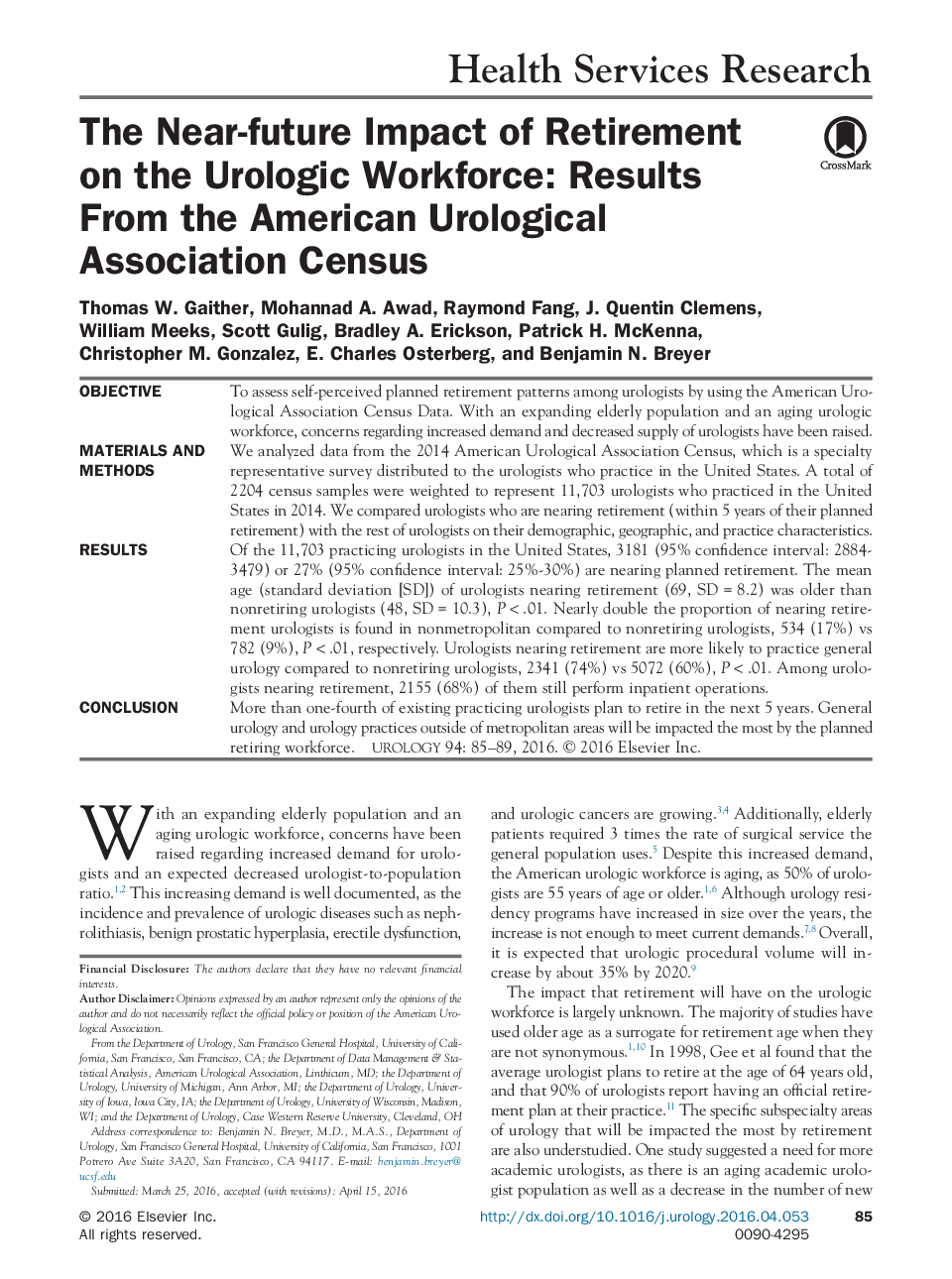| Article ID | Journal | Published Year | Pages | File Type |
|---|---|---|---|---|
| 3897803 | Urology | 2016 | 5 Pages |
ObjectiveTo assess self-perceived planned retirement patterns among urologists by using the American Urological Association Census Data. With an expanding elderly population and an aging urologic workforce, concerns regarding increased demand and decreased supply of urologists have been raised.Materials and MethodsWe analyzed data from the 2014 American Urological Association Census, which is a specialty representative survey distributed to the urologists who practice in the United States. A total of 2204 census samples were weighted to represent 11,703 urologists who practiced in the United States in 2014. We compared urologists who are nearing retirement (within 5 years of their planned retirement) with the rest of urologists on their demographic, geographic, and practice characteristics.ResultsOf the 11,703 practicing urologists in the United States, 3181 (95% confidence interval: 2884-3479) or 27% (95% confidence interval: 25%-30%) are nearing planned retirement. The mean age (standard deviation [SD]) of urologists nearing retirement (69, SD = 8.2) was older than nonretiring urologists (48, SD = 10.3), P < .01. Nearly double the proportion of nearing retirement urologists is found in nonmetropolitan compared to nonretiring urologists, 534 (17%) vs 782 (9%), P < .01, respectively. Urologists nearing retirement are more likely to practice general urology compared to nonretiring urologists, 2341 (74%) vs 5072 (60%), P < .01. Among urologists nearing retirement, 2155 (68%) of them still perform inpatient operations.ConclusionMore than one-fourth of existing practicing urologists plan to retire in the next 5 years. General urology and urology practices outside of metropolitan areas will be impacted the most by the planned retiring workforce.
